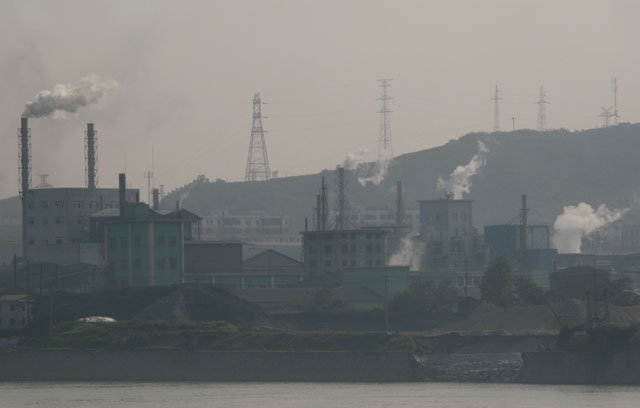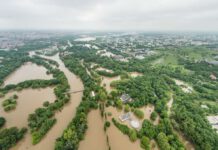BOULDER—The economic growth across much of Asia comes with a troubling side effect: pollutants from the region are being wafted up to the stratosphere during monsoon season. The new finding, in a study led by scientists at the National Center for Atmospheric Research, provides additional evidence of the global nature of air pollution and its effects far above Earth's surface.
 Factories line the shores of the lower Yangtze River in China. Heavy pollution tied to China's rapid industrial growth has produced poor visibility and health effects.
Factories line the shores of the lower Yangtze River in China. Heavy pollution tied to China's rapid industrial growth has produced poor visibility and health effects.
© UCAR, Photo by William Bradford
The international study is being published Thursday in Science Express. It was funded by the National Science Foundation, NCAR's sponsor, together with NASA and the Canadian Space Agency.
Using satellite observations and computer models, the research team determined that vigorous summertime circulation patterns associated with the Asian monsoon rapidly transport air upward from the Earth's surface. Those vertical movements provide a pathway for black carbon, sulfur dioxide, nitrogen oxides, and other pollutants to ascend into the stratosphere, about 20-25 miles above the Earth's surface.
“The monsoon is one of the most powerful atmospheric circulation systems on the planet, and it happens to form right over a heavily polluted region,” says NCAR scientist William Randel, the lead author. “As a result, the monsoon provides a pathway for transporting pollutants up to the stratosphere.”
Once in the stratosphere, the pollutants circulate around the globe for several years. Some eventually descend back into the lower atmosphere, while others break apart.
The study suggests that the impact of Asian pollutants on the stratosphere may increase in coming decades because of the growing industrial activity in China and other rapidly developing nations. In addition, climate change could alter the Asian monsoon, although it remains uncertain whether the result would be to strengthen or weaken vertical movements of air that transport pollutants into the stratosphere.
Randel says more research is needed into the possible effects of the pollutants. When sulfur rises into the stratosphere, it can lead to the creation of small particles called aerosols that are known to influence the ozone layer. The monsoon transport pathway may also have effects on other gases in the stratosphere, such as water vapor, that affect global climate by influencing the amount of solar heat that reaches Earth.
… read the full Release at:
Press Release: University Corporation for Atmospheric Research (UCAR), 23 March 2010, www.ucar.edu











